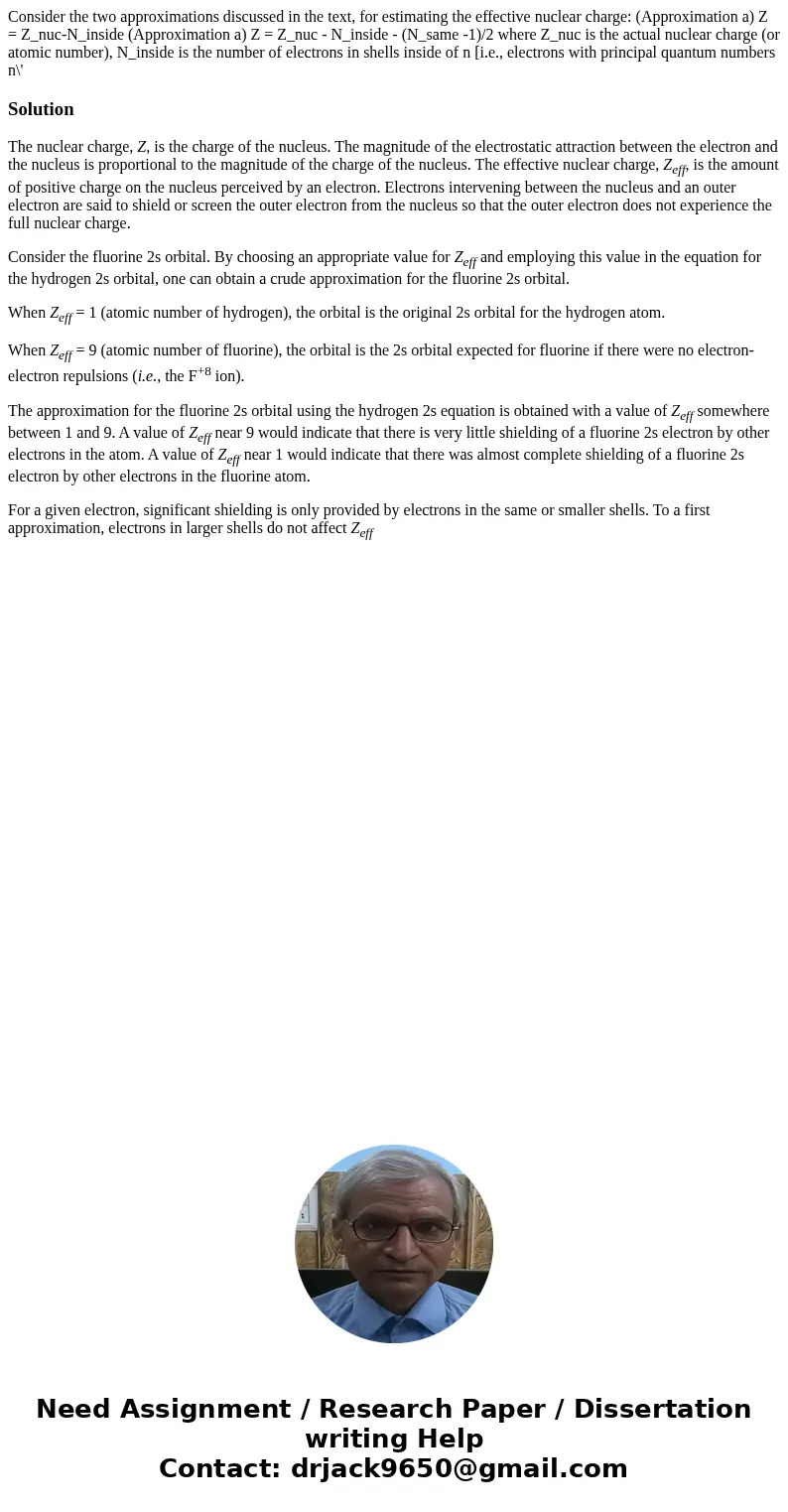Consider the two approximations discussed in the text for es
Solution
The nuclear charge, Z, is the charge of the nucleus. The magnitude of the electrostatic attraction between the electron and the nucleus is proportional to the magnitude of the charge of the nucleus. The effective nuclear charge, Zeff, is the amount of positive charge on the nucleus perceived by an electron. Electrons intervening between the nucleus and an outer electron are said to shield or screen the outer electron from the nucleus so that the outer electron does not experience the full nuclear charge.
Consider the fluorine 2s orbital. By choosing an appropriate value for Zeff and employing this value in the equation for the hydrogen 2s orbital, one can obtain a crude approximation for the fluorine 2s orbital.
When Zeff = 1 (atomic number of hydrogen), the orbital is the original 2s orbital for the hydrogen atom.
When Zeff = 9 (atomic number of fluorine), the orbital is the 2s orbital expected for fluorine if there were no electron-electron repulsions (i.e., the F+8 ion).
The approximation for the fluorine 2s orbital using the hydrogen 2s equation is obtained with a value of Zeff somewhere between 1 and 9. A value of Zeff near 9 would indicate that there is very little shielding of a fluorine 2s electron by other electrons in the atom. A value of Zeff near 1 would indicate that there was almost complete shielding of a fluorine 2s electron by other electrons in the fluorine atom.
For a given electron, significant shielding is only provided by electrons in the same or smaller shells. To a first approximation, electrons in larger shells do not affect Zeff

 Homework Sourse
Homework Sourse